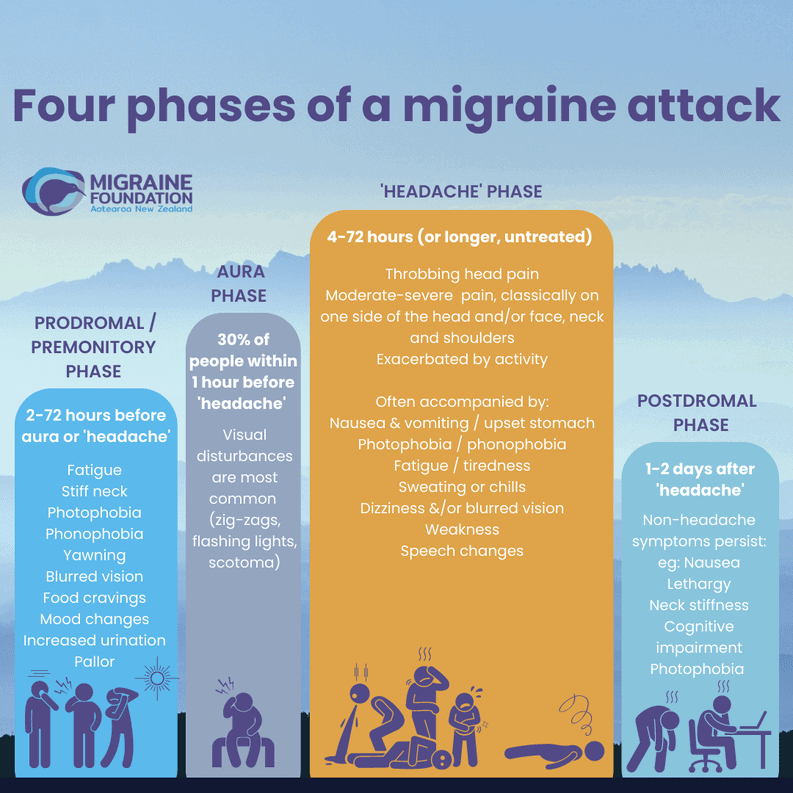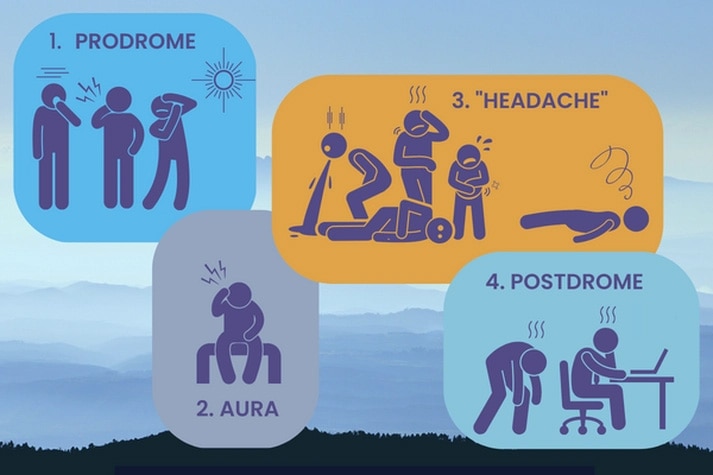We’ve become more familiar with the phrase ‘Migraine is more than just a headache’ but what does that mean, exactly?
In one sense, it means that the type of headache experienced during a migraine attack is usually more severe than the garden-variety tension-type headache. A migraine headache is described as throbbing, stabbing, pulsating, pounding, unbearable and often starts on one side of the head. Tension-type headaches are generally milder, experienced as a tight band across the forehead.
‘Migraine is more than just a headache’ also means that during a migraine attack, you experience many more symptoms than ‘just a headache’. Migraine attacks typically include symptoms such as nausea, vomiting, sensitivity to light, sound, smell or touch, fatigue, dizziness, clumsiness and cognitive difficulties – like finding it hard to remember words (or passcodes), think clearly and concentrate. During a migraine attack, peopel tend to want to stay still and shut off any sensory input, especially light and sound. Those other symptoms can be as, or more, unpleasant and debilitating as the headache.
‘Migraine is more than just a headache’ also refers to how a migraine attack extends beyond ‘just a headache’. Migraine attacks occur in four phases, and the headache phase is only one part of it. A full migraine attack can last for days, if you count the time before and after the headache phase. Before the headache phase, you have the prodromal phase, where you may notice food cravings, changes in mood (high or low), fatigue and neck stiffness. Some of these prodromal symptoms have previously been thought to trigger migraine attacks, like eating certain foods, but are now considered to be part of the attack itself. This phase can last for hours to days.
Similarly, after the headache phase, the postdromal phase can linger for a day or more. This is where the head pain has eased but other symptoms linger. If you have chronic migraine, with headaches on 15 days or more a month, these phases can blur into each other and you may experience some kind of migraine symptom most or every day.
Many people have heard of the aura phase of migraine, which occurs just before a headache develops, and usually manifests as disturbed vision. The aura clearly denotes a migraine attack as more than ‘just a headache’ but not everyone with migraine experiences an aura during an attack. If you’ve never had an aura, this doesn’t mean you don’t have migraine.
Understanding how migraine attacks include far more than ‘just a headache’ can help us advocate for ourselves, in getting treatment, support and better understanding from others about how migraine affects us. Migraine is a neurological condition, involving many parts of the nervous system, which is why migraine attacks are far more than ‘just a headache’.



